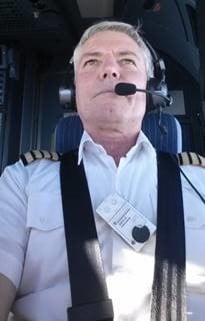Measurements of UV—A Exposure of Commercial Pilots Using Genesis-UV Dosimeters
Abstract
1. Introduction
2. Experiments
- flights with low UV-A signal and erythema effective signal below the measurement threshold (high UV attenuating windshield or when visors are used)
- flights with a range of UV-A signals with erythema effective signal measured (high UV transmitting windshield).
3. Results
4. Discussion
5. Conclusions
Author Contributions
Funding
Acknowledgments
Conflicts of Interest
References
- Sanlorenzo, M.; Wehner, M.R.; Linos, E.; Kornak, J.; Kainz, W.; Posch, C.; Vujic, I.; Johnston, K.; Gho, D.; Monico, G.; et al. The risk of melanoma in airline pilots and cabin crew: A meta-analysis. JAMA Dermatol. 2015, 151, 51–58. [Google Scholar] [CrossRef] [PubMed]
- Miura, K.; Olsen, C.M.; Rea, S.; Marsden, J.; Green, A.C. Do airline pilots and cabin crew have raised risks of melanoma and other skin cancers? Systematic review and meta-analysis. Br. J. Dermatol. 2019, 181, 55–64. [Google Scholar] [CrossRef] [PubMed]
- Hammer, G.P.; Auvinen, A.; De Stavola, B.L.; Grajewski, B.; Gundestrup, M.; Haldorsen, T.; Hammar, N.; Lagorio, S.; Linnersjö, A.; Pinkerton, L. Mortality from cancer and other causes in commercial airline crews: A joint analysis of cohorts from 10 countries. Occup. Environ. Med. 2014, 71, 313–322. [Google Scholar] [CrossRef] [PubMed]
- Dreger, S.; Wollschläger, D.; Schafft, T.; Hammer, G.P.; Blettner, M.; Zeeb, H. Cohort study of occupational cosmic radiation dose and cancer mortality in German aircrew, 1960–2014. Occup. Environ. Med. 2020, 77, 285–291. [Google Scholar] [CrossRef] [PubMed]
- Olsen, C.M.; Miura, K.; Dusingize, J.C.; Hosegood, I.; Brown, R.; Drane, M.; Clem, P.; Marsden, J.; Tinker, R.; Karipidis, K. Melanoma incidence in Australian commercial pilots, 2011–2016. Occup. Environ. Med. 2019, 76, 462–466. [Google Scholar] [CrossRef] [PubMed]
- Blumthaler, M.; Ambach, W.; Ellinger, R. Increase in solar UV radiation with altitude. J. Photochem. Photobiol. B Biol. 1997, 39, 130–134. [Google Scholar] [CrossRef]
- Lucas, R.; McMichael, T.; Smith, W.; Armstrong, B.K.; Prüss-Üstün, A. Solar Ultraviolet Radiation: Global Burden of Disease from Solar Ultraviolet Radiation; World Health Organization: Geneva, Switzerland, 2006. [Google Scholar]
- Chorley, A.; Higlett, M.; Baczynska, K.; Hunter, R.; Khazova, M. Measurements of pilots’ occupational solar UV exposure. Photochem. Photobiol. 2014, 90, 935–940. [Google Scholar] [CrossRef] [PubMed]
- Chorley, A.C.; Baczynska, K.A.; Benwell, M.J.; Evans, B.J.; Higlett, M.P.; Khazova, M.; O’Hagan, J.B. Occupational Ocular UV Exposure in Civilian Aircrew. Aerosp. Med. Hum. Perform. 2016, 87, 32–39. [Google Scholar] [CrossRef] [PubMed]
- Schennetten, K.; Meier, M.M.; Scheibinger, M. Measurement of UV radiation in commercial aircraft. J. Radiol. Prot. 2018, 39, 85. [Google Scholar] [CrossRef] [PubMed]
- Meerkötter, R.; Schennetten, K. Validation of a radiative transfer model with measurements of UV radiation inside a commercial aircraft. J. Radiol. Prot. 2020, 40, 181. [Google Scholar] [CrossRef] [PubMed]
- Diffey, B.L.; Roscoe, A.H. Exposure to solar ultraviolet radiation in flight. Aviat. Space Environ. Med. 1990, 61, 1032–1035. [Google Scholar] [PubMed]
- Sanlorenzo, M.; Vujic, I.; Posch, C.; Cleaver, J.E.; Quaglino, P.; Ortiz-Urda, S. The risk of melanoma in pilots and cabin crew: UV measurements in flying airplanes. JAMA Dermatol. 2015, 151, 450–452. [Google Scholar] [CrossRef] [PubMed][Green Version]
- Cadilhac, P.; Bouton, M.-C.; Cantegril, M.; Cardines, C.; Gisquet, A.; Kaufman, N.; Klerlein, M. In-Flight Ultraviolet Radiation on Commercial Airplanes. Aerosp. Med. Hum. Perform. 2017, 88, 947–951. [Google Scholar] [CrossRef] [PubMed]
- Baczynska, K.A.; Brown, S.; Chorley, A.; Khazova, M.; O’Hagan, J.B.; Lyachev, A.; Wittlich, M. In-flight UV-A exposure of commercial airline pilots. Aerosp. Med. Hum. Perform. 2020, 91, 501–510. [Google Scholar]
- ICNIRP. Guidelines on limits of exposure to ultraviolet radiation of wavelengths between 180 nm and 400 nm (incoherent optical radiation), International Commission on Non-Ionizing Radiation Protection. Health Phys. 2004, 87, 171–186. [Google Scholar] [CrossRef] [PubMed]
- Wittlich, M.; Westerhausen, S.; Kleinespel, P.; Rifer, G.; Stöppelmann, W. An approximation of occupational lifetime UVR exposure: Algorithm for retrospective assessment and current measurements. J. Eur. Acad. Dermatol. Venereol. 2016, 30, 27–33. [Google Scholar] [CrossRef] [PubMed]
- Schmalwieser, A.W.; Cabaj, A.; Schauberger, G.; Rohn, H.; Maier, B.; Maier, H. Facial solar UV exposure of Austrian farmers during occupation. Photochem. Photobiol. 2010, 86, 1404–1413. [Google Scholar] [CrossRef] [PubMed]
- Nakagawara, V.B.; Montgomery, R.W.; Marshall, W.J. Optical Radiation Transmittance of Aircraft Windscreens and Pilot Vision; Federal Aviation Administration Civil Aerospace Medical Institute: Oklahoma City, OK, USA, 2007. [Google Scholar]
- Chorley, A.C. Ocular Exposure to Occupational Non-Ionising Radiation in Professional Pilots. Ph.D. Thesis, London South Bank University, London, UK, 2015. [Google Scholar]
- Chorley, A.; Evans, B.; Benwell, M. Solar eye protection habits of civilian professional pilots. Med. Aeronaut Spat. 2013, 54, 61–67. [Google Scholar]
- Chorley, A.C.; Evans, B.J.; Benwell, M.J. Solar eye protection practices of civilian aircrew. Aerosp. Med. Hum. Perform. 2015, 86, 953–961. [Google Scholar] [CrossRef] [PubMed]
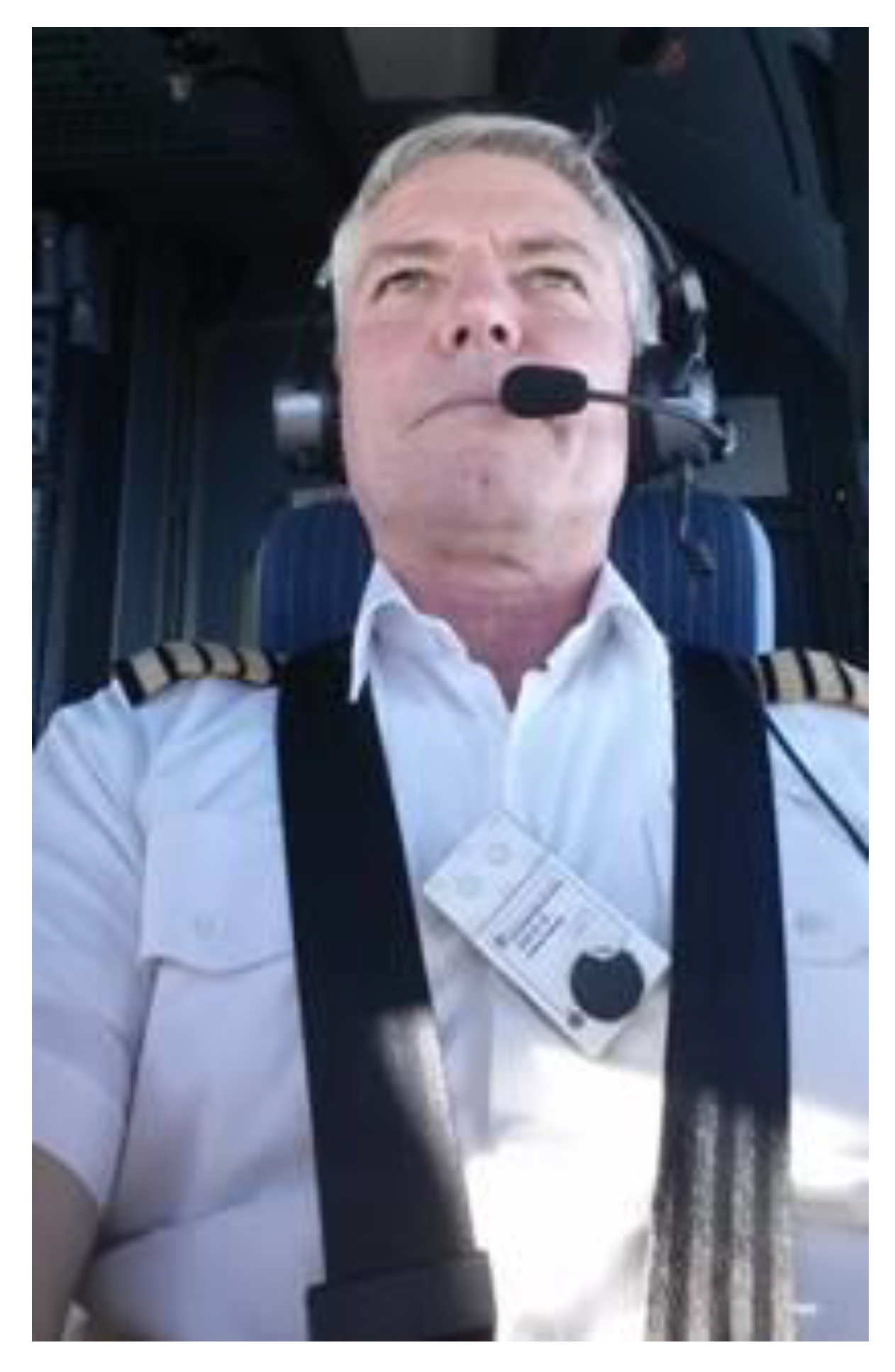
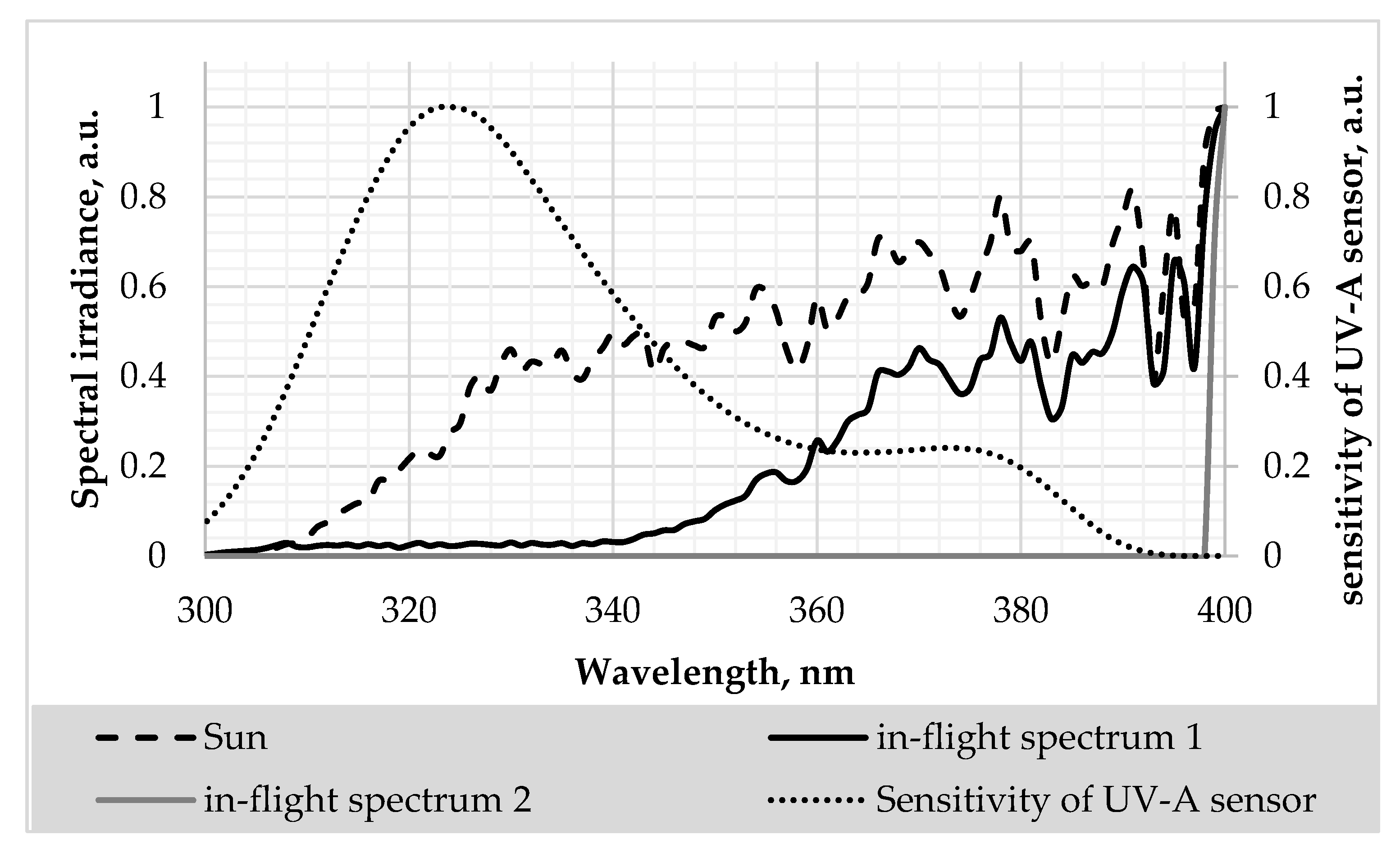
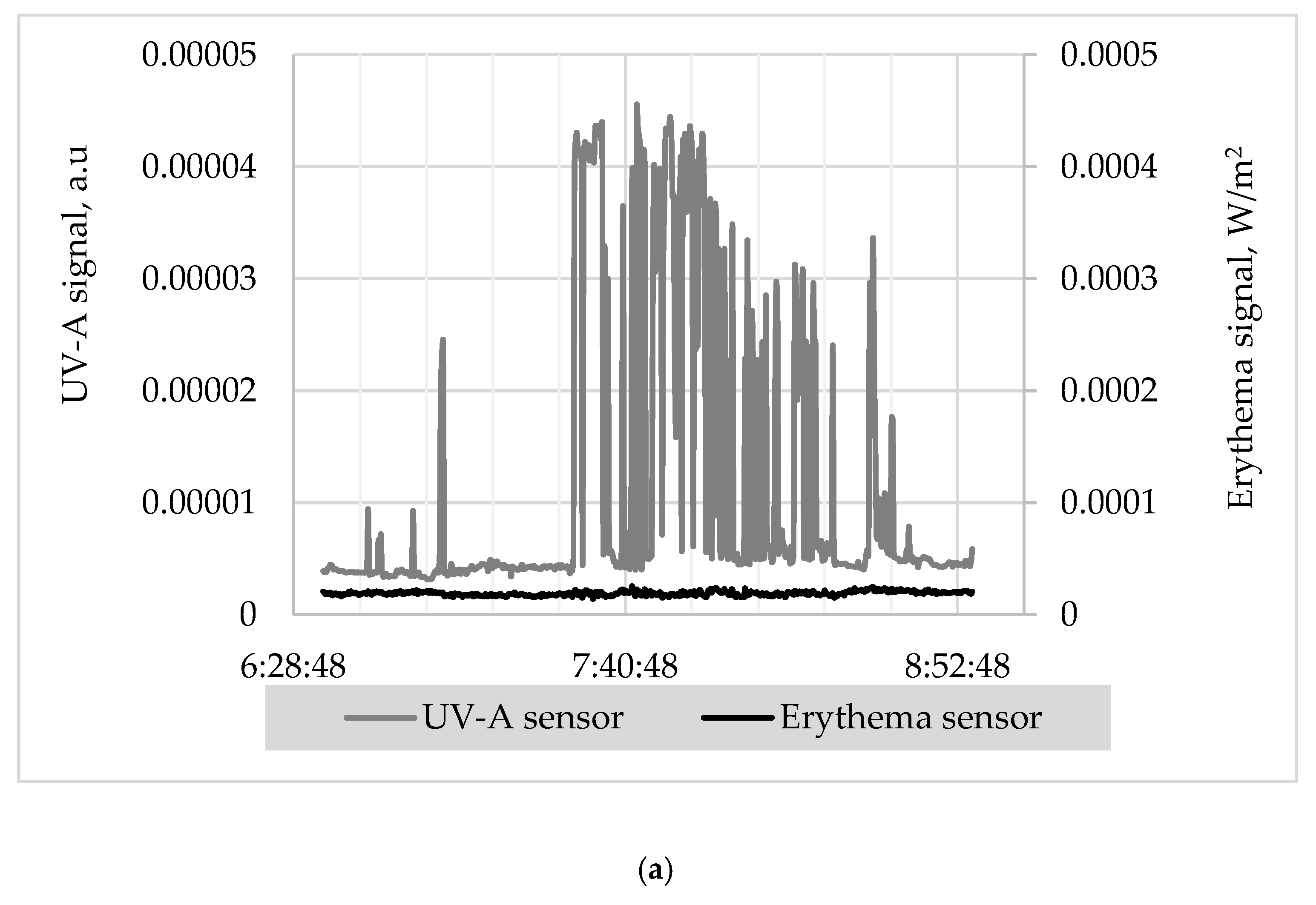
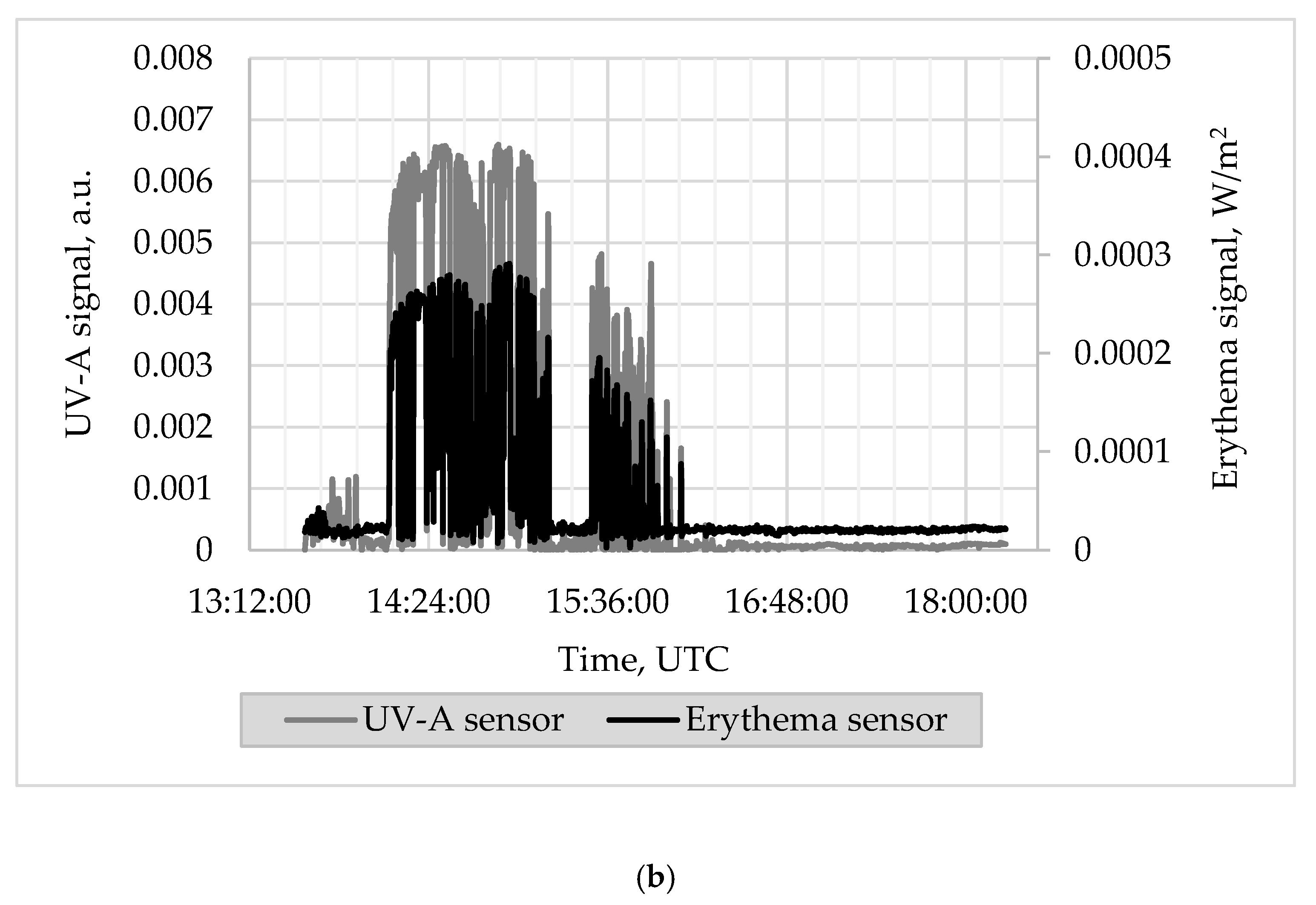
| Outbound Flight | Inbound Flight | ||||||
|---|---|---|---|---|---|---|---|
| UV-A Dose, < 1 kJ/m2 | UV-A Dose, > 1 kJ/m2 | UV-A Dose, < 1 kJ/m2 | UV-A Dose, > 1 kJ/m2 | ||||
| Flights | Flights | Range, kJ/m2 | Average (STDEV *), kJ/m2 | Flights | Flights | Range, kJ/m2 | Average (STDEV), kJ/m2 |
| 12 | 5 | 3.5–5.7 | 4.7(0.9) | 11 | 6 | 3.6–32.2 | 12.8(9.9) |
| 4 | 2 | 2.6–13.9 | 7.8(8.6) | 3 | 3 | 1.3–4.0 | 2.3(1.5) |
| 4 | 2 | 1.8–8.2 | 5.0(4.5) | 5 | 1 | 2 | n/a |
| 11 | 6 | 1.5–3.0 | 2.2(0.6) | 8 | 9 | 1.3–6.1 | 3(1.3) |
| 1 | 3 | 2.6–9.0 | 5.6(3.2) | 1 | 3 | 5.3–10.8 | 8.7(3.0) |
| 4 | 1 | 15.8 | n/a | 4 | 1 | 5.6 | n/a |
| 1 | 0 | n/a | n/a | 1 | 0 | n/a | n/a |
| 2 | 0 | n/a | n/a | 2 | 0 | n/a | n/a |
| 0 | 2 | 17.3–20.1 | 18.7(2.0) | 0 | 2 | 3.4–12.3 | 7.8(6.3 |
| Outbound Flight | Inbound Flight | ||||||
|---|---|---|---|---|---|---|---|
| UV-A Dose, < 1 kJ/m2 | UV-A Dose, > 1 kJ/m2 | UV-A Dose, < 1 kJ/m2 | UV-A Dose, > 1 kJ/m2 | ||||
| Flights | Flights | Range, kJ/m2 | Average (STDEV), kJ/m2 | Flights | Flights | Range, kJ/m2 | Average (STDEV), kJ/m2 |
| 10 (2 in dark) | 5 | 2.3–16.9 | 7.12 (6.4) | 15 (5 in dark) | 0 | n/a | n/a |
| 21 (6 in dark) | 0 | n/a | n/a | 1 (20 in dark) | 0 | n/a | n/a |
| 1 | 1 | 23.8 | n/a | 2 (1 in dark) | 0 | n/a | n/a |
| 14 | 12 | 1.4–6.2 | 3.6 (1.4) | 26 (4 in dark) | 0 | n/a | n/a |
| 2 | 3 | 1.7–63.5 | 24.6 (33.9) | 5 (1 in dark) | 0 | n/a | n/a |
| 9 | 1 | 1.6 | n/a | 10 | 0 | n/a | n/a |
| 1 | 1 | 2.5 | n/a | 2 (1 in dark) | 0 | n/a | n/a |
| 2 | 4 | 1.6–12.7 | 6.4 (5.1) | 6 | 0 | n/a | n/a |
| 7 | 2 | 2.2–2.7 | 2.5 (0.3) | 9 (4 in dark) | 0 | n/a | n/a |
© 2020 by the authors. Licensee MDPI, Basel, Switzerland. This article is an open access article distributed under the terms and conditions of the Creative Commons Attribution (CC BY) license (http://creativecommons.org/licenses/by/4.0/).
Share and Cite
Baczynska, K.A.; Brown, S.; Chorley, A.C.; Lyachev, A.; Wittlich, M.; Khazova, M. Measurements of UV—A Exposure of Commercial Pilots Using Genesis-UV Dosimeters. Atmosphere 2020, 11, 475. https://doi.org/10.3390/atmos11050475
Baczynska KA, Brown S, Chorley AC, Lyachev A, Wittlich M, Khazova M. Measurements of UV—A Exposure of Commercial Pilots Using Genesis-UV Dosimeters. Atmosphere. 2020; 11(5):475. https://doi.org/10.3390/atmos11050475
Chicago/Turabian StyleBaczynska, Katarzyna A., Simon Brown, Adrian C. Chorley, Andrey Lyachev, Marc Wittlich, and Marina Khazova. 2020. "Measurements of UV—A Exposure of Commercial Pilots Using Genesis-UV Dosimeters" Atmosphere 11, no. 5: 475. https://doi.org/10.3390/atmos11050475
APA StyleBaczynska, K. A., Brown, S., Chorley, A. C., Lyachev, A., Wittlich, M., & Khazova, M. (2020). Measurements of UV—A Exposure of Commercial Pilots Using Genesis-UV Dosimeters. Atmosphere, 11(5), 475. https://doi.org/10.3390/atmos11050475





